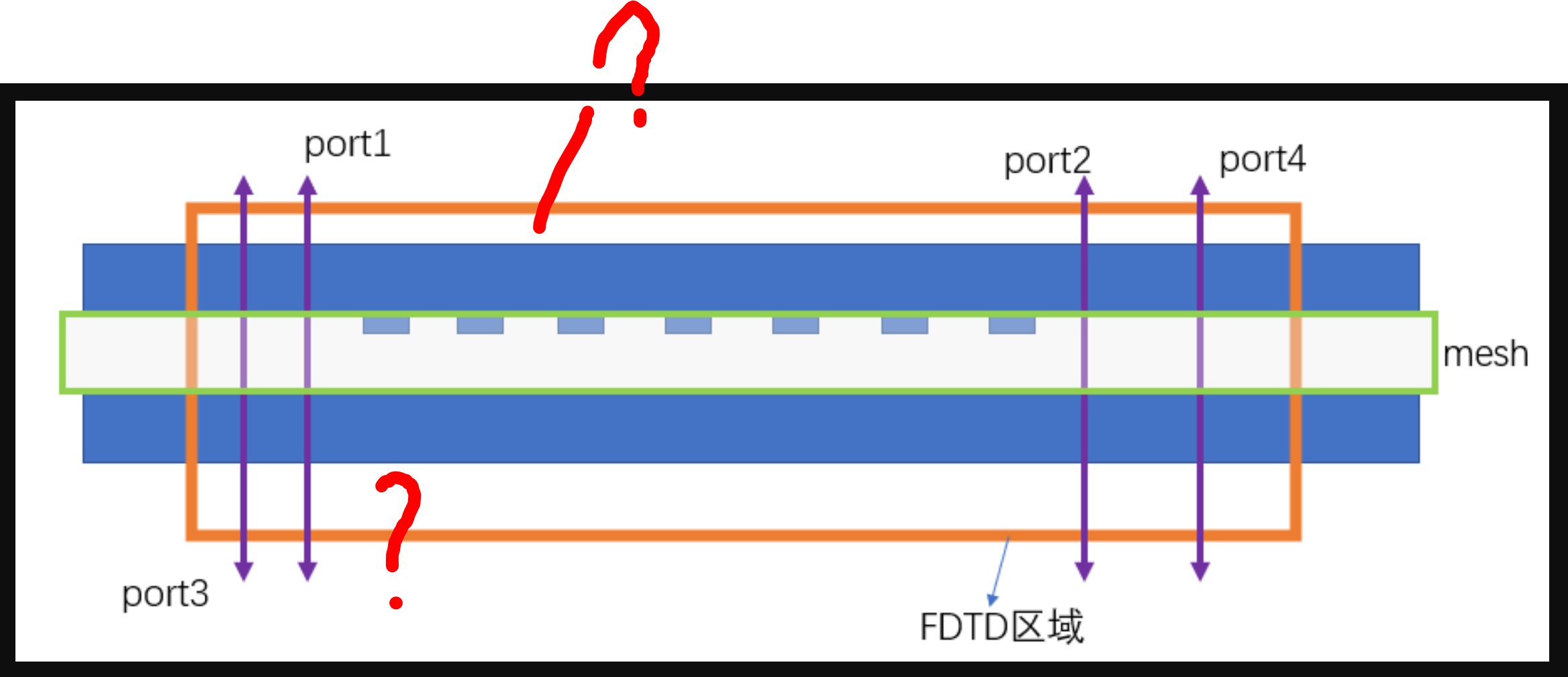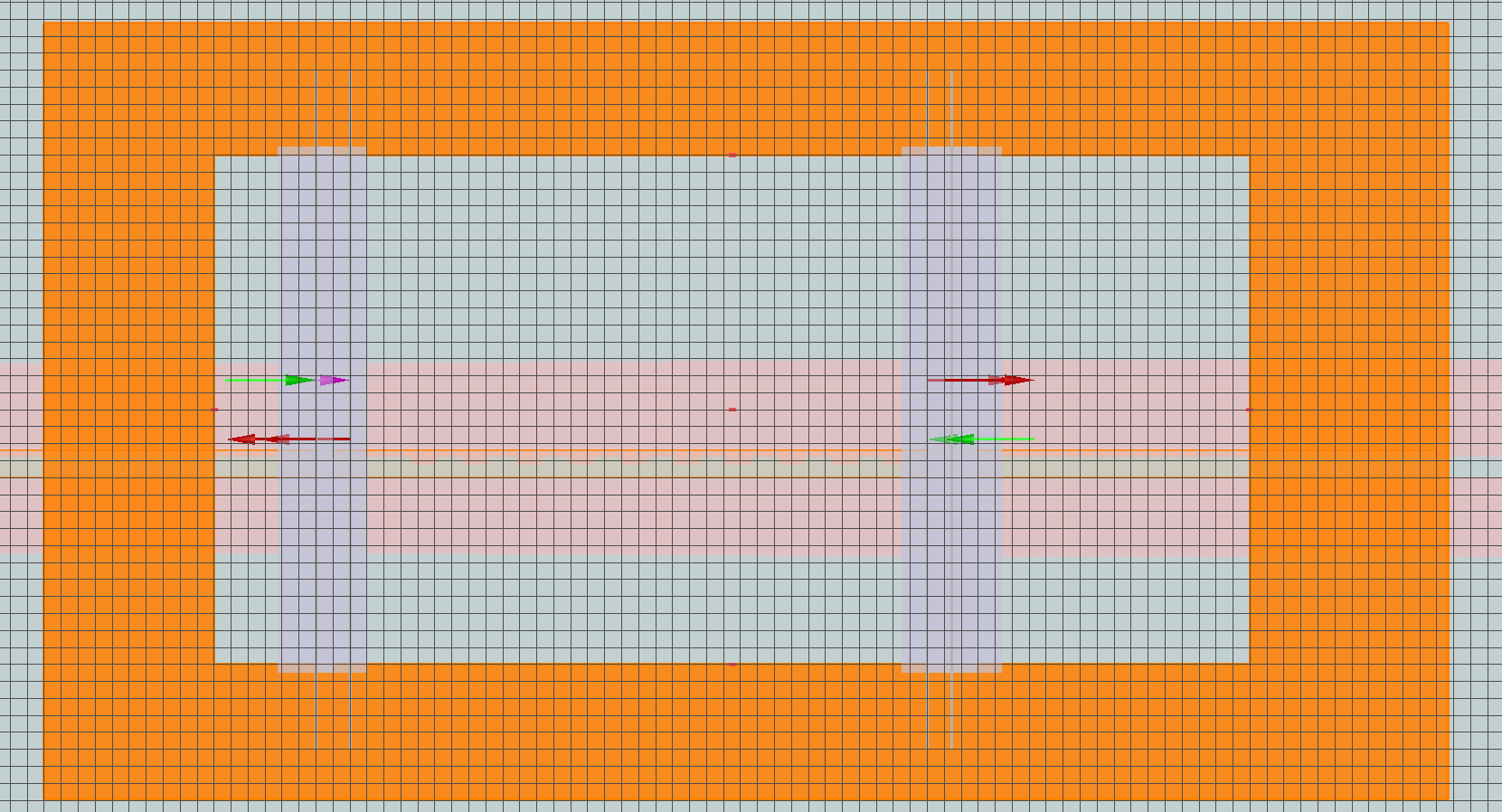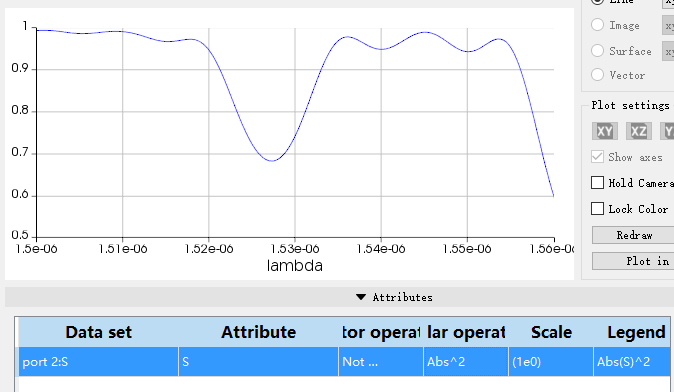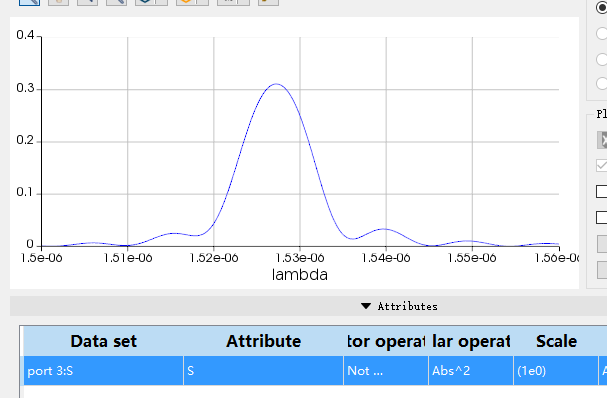-
-
March 17, 2022 at 9:47 am
ywq
Subscriber孙老师您好,我在用fdtd仿真基于啁啾光栅(周期数为1000)的延时线时总是会发散,仿真模型如下图
March 17, 2022 at 10:34 pmGuilin Sun
Ansys Employee首先,这个发散的问题是会影响结果的正确性!
你可能需要首先检查结构是否正确:目前看结构是悬在背景材料(很可能是空气)中,是这样吗?

请做如下检查:
1:看看PML是否足够厚?至少半个波长
2:看看Port2和Port4里面监视器,场在边缘是否很小?用对数坐标看,如果振幅不小于0.001,说明仿真区横向尺寸小了,你也看看光源的模式分布。
3:这种结构一般谐振比较强,你需要减小Autoshutoff ,参见 Ansys Insight: 为什么说仿真时间要足够长才能得到正确的频域结果
4: 在光栅周期区间用均匀网格,设置Override Mesh,使得每个周期有整数个网格。假设周期是0.17um, 尺寸可能要0.0017um或者其整数倍。你图中似乎用了这样的均匀网格,但是没有必要涵盖整个结构,仅覆盖光栅区,保证周期内的网格均匀且整数个就可以。
你先修改测试看看。March 17, 2022 at 10:35 pmMarch 23, 2022 at 7:05 amywq
Subscriber孙老师您好,我按照您的建议改了一下相关参数,包括:
- 增大了FDTD的y方向尺寸和四个port的尺寸,使得模式的光场能量在边界截至;
- 将dt stability factor缩小为0.5;
- 缩小mesh的网格尺寸;
运行的结果就是,光栅周期数为100时,可以快速收敛,得到的结果很正确,光栅周期数为1000时,仍然发散。这里只是把光栅的周期数(也就是光栅的总长度)改变了,就导致了仿真的发散。对于这个现象,我不是很理解。
另外您给的一个建议是看看PML是否足够厚,至少半个波长,我不知道怎么设置PML的厚度,麻烦您详细介绍一下。March 23, 2022 at 2:23 pmMarch 23, 2022 at 2:23 pmywq
SubscriberMarch 23, 2022 at 2:23 pmywq
SubscriberMarch 23, 2022 at 2:23 pmywq
SubscriberMarch 23, 2022 at 2:23 pmMarch 23, 2022 at 5:21 pmGuilin Sun
Ansys EmployeePML厚度就是PML前面的网格尺寸成层数,你可以简单用Ruler测量,不需要非常精确,或者加监视器提取坐标计算;
"当光栅周期数为1000时,仍然会发散",每次有变化你仿真的都不是同一个器件,你需要参考发散的帖子自己琢磨如何修改才能避免发散,里面有很多建议。Viewing 9 reply threads- The topic ‘用fdtd仿真光栅延时线时总是发散’ is closed to new replies.
Ansys Innovation SpaceTrending discussionsTop Contributors-
3492
-
1057
-
1051
-
965
-
942
Top Rated Tags© 2025 Copyright ANSYS, Inc. All rights reserved.
Ansys does not support the usage of unauthorized Ansys software. Please visit www.ansys.com to obtain an official distribution.
-
The Ansys Learning Forum is a public forum. You are prohibited from providing (i) information that is confidential to You, your employer, or any third party, (ii) Personal Data or individually identifiable health information, (iii) any information that is U.S. Government Classified, Controlled Unclassified Information, International Traffic in Arms Regulators (ITAR) or Export Administration Regulators (EAR) controlled or otherwise have been determined by the United States Government or by a foreign government to require protection against unauthorized disclosure for reasons of national security, or (iv) topics or information restricted by the People's Republic of China data protection and privacy laws.














